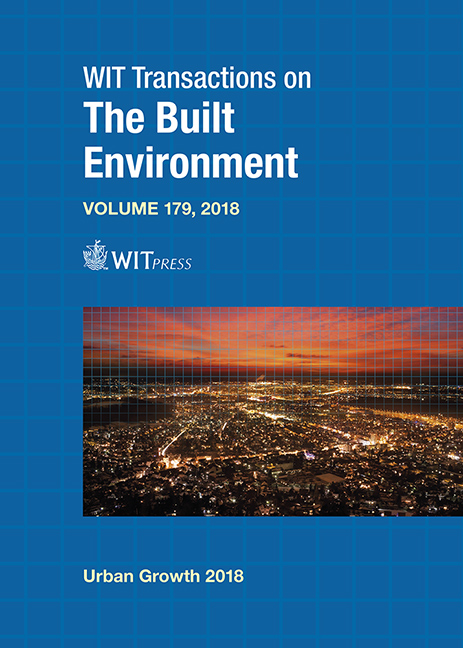CITY REPAIR: THE VIBRANT TRANSFORMATION OF PUBLIC OPEN SPACES – ANALYSIS AND DERIVATION OF DETAILED MEASURES
Price
Free (open access)
Transaction
Volume
179
Pages
12
Page Range
133 - 144
Published
2018
Size
657 kb
Paper DOI
10.2495/UG180131
Copyright
WIT Press
Author(s)
UDO DIETRICH
Abstract
Master students of the Resource Efficiency in Architecture and Planning (REAP) Program of related built environment disciplines considered public urban spaces and the question – for human needs, what makes the spaces vibrant? This paper reports main findings of the student group work. The first step of the investigation was for each student group to identify two spaces perceived as negative (non-vibrant) and two spaces perceived as positive (vibrant). The analysis of these spaces for all groups was consolidated into a list of negative criteria (aspects to be avoided) and positive criteria (aspects to be realised).The negative criteria for example included aspects about poor protection and accessibility. And the positive criteria included aspects that encouraged the use, enjoyment and comfort experienced in public spaces. Secondly, the groups identified spaces perceived as negative (non-vibrant) but with potential to become positive (vibrant) urban spaces. The potential identified was then substantiated for the spaces as specific criterion, which informed a framework to analyse the design of public open spaces. The criteria selection was guided by Jan Gehl’s work in public space design, for investigation methods, perception satisfiers and physical design criteria. Thirdly, environmental interventions to improve the environmental performance of the public space were considered, such an integrating Photovoltaic (PV) panels into building façades. Finally, students designed detailed proposals to transform the chosen non-vibrant public spaces. Emphasis was placed on bottom-up strategies to facilitate local community involvement in space activation initiatives.
Keywords
vibrant urban spaces, human needs, protection, comfort, enjoyment, design of urban spaces, building integrated PV, bottom-up strategies





